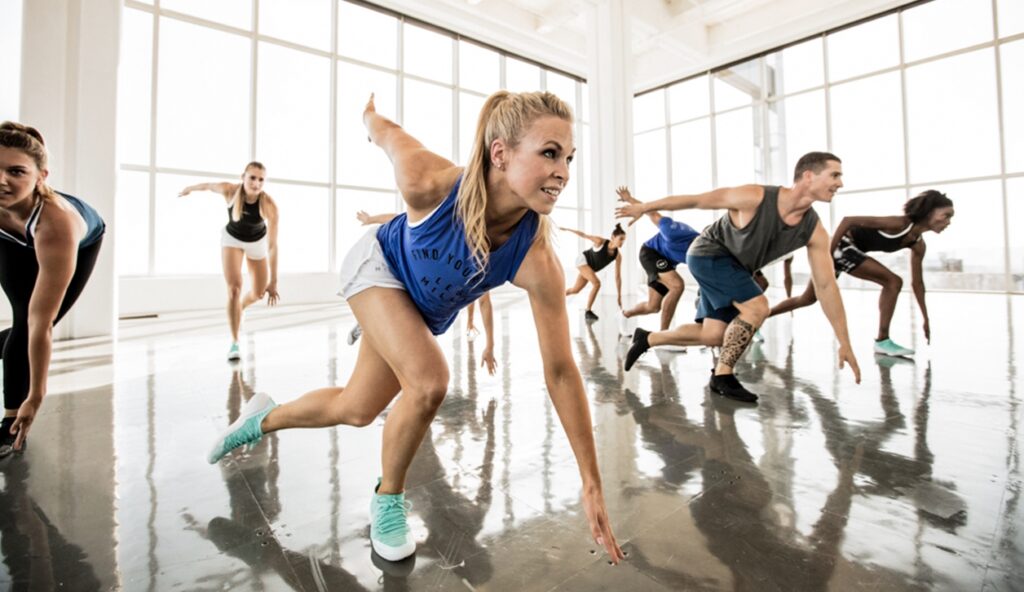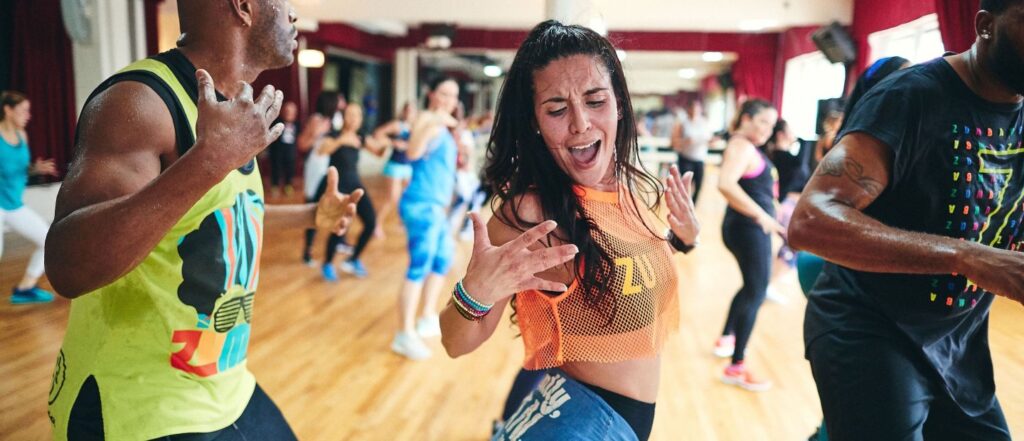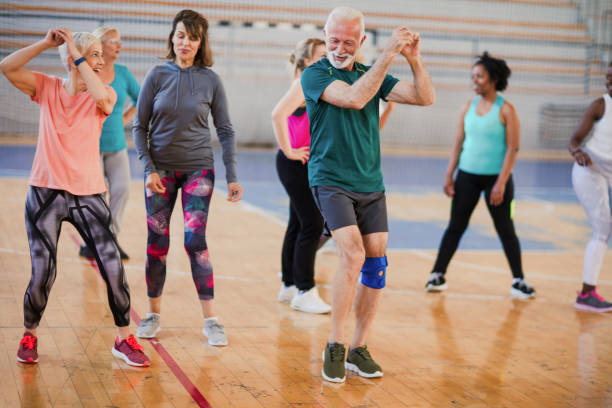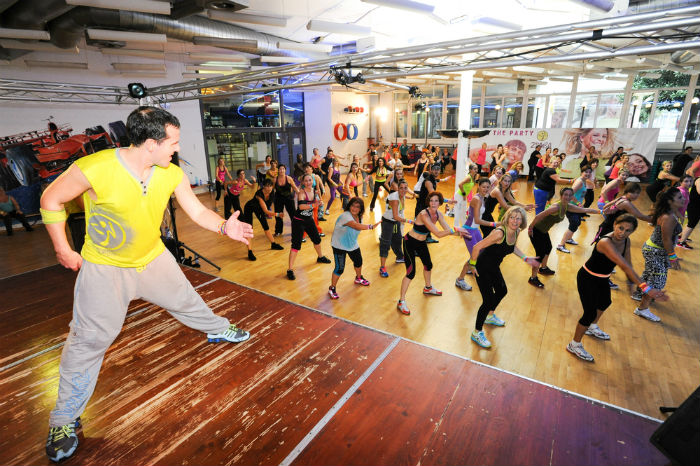There are many types of exercise classes that involve performing a set of movements to music. These choreography and exercise classes are usually performed in a group setting and are a great way to make exercise enjoyable. The choreography of these sessions is important to keep clients engaged and having fun. Some different types of choreography classes include:
Body Pump Barbell Workout
Body pump is a fast-paced workout involving a barbell to get you fitter and stronger, combining music, instructors, and movement to achieve specific exercises in a more time efficient manner.
It is averagely a 55-minute workout with 10 tracks each targeting a specific muscle group. Works as a resistance workout and also works the cardiovascular system.
Body Attack (aerobic workout)
Body attack is a high energy fitness workout catered from beginners to experts. It focuses highly on cardio workout inspired by sports, therefore incorporating sport-derived movements.
Involving exercise such as running, jumping and lunging with body weight resistance workouts timed with music. Improving muscle tone, core strength, fitness, and flexibility.

Zumba
Zumba is a fitness program that involves cardio and Latin-inspired dance, a form of fitness class in which you burn off calories by dancing to different kinds of lively tunes.
You should start byZumba targets lots of different muscle groups at once for total body toning. Boosts your heart health. You not only get aerobic benefits (it really gets your heart rate up), you also get anaerobic benefits – the kind that help you maintain a good cardiovascular respiratory system.

Sports Aerobics
Sports aerobics is a sport that involves performing high intensity gymnastics moves to music. The movements are a combination of dynamic strength, static strength, balance, flexibility and cardio fitness sequenced together in patterns. The aim of a sports aerobics routine is to have a high level of artistic quality, creativity, execution and difficulty. It requires a high level of stamina to maintain high energy throughout the entire routine.
Step by Step Guide to creating a choreography for a class
Step 1: Establish your audience
The age and ability level of your audience is the first thing you should consider before choreographing a piece. This will be the basis off which you choose your music, movements, sequencing and pace. The audience will enjoy a class more if they are listening to a song that is familiar to their demographic or has an engaging rhythm. For children, aim to select music that is from popular TV shows or movies to keep them engaged. For adults, aim to use popular songs from their era that they will recognise. It is often easier for clients to follow a choreographed routine when they know the general rhythm of the music.

Step 2: Music speed
The tempo of your music will dictate the difficulty level of your routine. A slower song gives the clients more time to think about the execution of the movement and allows them more time to respond to demonstrations. A fast paced song should be used in more advanced classes where the clients can pick up the routines well and have a good technique base. You should aim to choose songs that have a very steady beat as this will make the choreography process more simple. To find the tempo of a song, listen for the strong baseline beats not the melody or lyrics.
Step 3: Movements
The movements you select to use in your routine should most importantly suit your audience in terms of difficulty and style. When choreographing, you should be matching movements to the energy of the song. Try to incorporate some movements that are more simple (i.e., fillers) in between complex steps so that there are dynamic changes within the routine. Make each movement fit within a 4 or 8 block of counts (if your music is a 4/4 rhythm) so that the steps can easily match with the music.

Step 4: Structure
Before starting to choreograph, analyze the structure of your song into its main components. Start by counting the beats in sections of 1-8, as this indicates a phrase or ‘sentence’ of a 4/4 rhythm song (most popular songs are 4/4 rhythm).
You can find the start of a count of 8 by identifying the strongest beat as count 1. Next, break down the song into its main sections – often this will include an introduction, first verse, pre-chorus, chorus, second verse and a bridge.
Consider the speed of each of these sections, and then brainstorm the type of movements that will fit each section (i.e. the chorus might be the most high energy section with more jumping/explosive movements).
Step 5: Sequence
Choreograph the dance one section at a time, with distinct movement qualities matching the different parts of the song.
When sequencing steps together, try to be conscious of making the finishing position of one movement similar to the starting position of the next, allowing your choreography to flow on effectively.
The intensity of your movements should gradually build to a peak and then taper at the end of the song.
One way to make your choreography more simple for participants to learn is to repeat the same sequence each time the chorus appears in the song.
It also might help to always initiate movements on the right side first before the left (as most people are right side dominant) so that the movement sequencing has a general pattern that participants can follow.

Step 6: Teaching your choreography
Teaching your choreography will vary depending on the skill level of the participants. In general, teach blocks of approximately 16 counts at a time, and repeat these sections twice before practicing with the music.
Repetition is the most beneficial aspect of learning choreography as it allows for muscle memory to occur so that participants can focus on their technique. Count the sets of 8 out loud while you teach the movements to make sure participants can see how the steps will fit in the timing of the music.
Finally, always begin teaching the choreography at a slower pace before building the pace and then executing the steps with the music.

